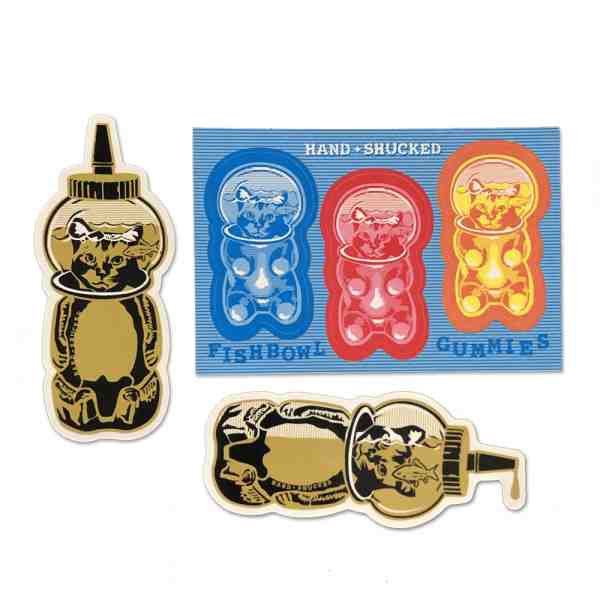From Canvas to Concrete: Must-See Street Art Galleries
If you’re looking for what makes a street art gallery captivating, it’s the vibrant intersection of culture, community, and creativity that street art embodies. Street art galleries have transformed from the field of rebellious underground expressions to dynamic hubs of public engagement and cultural evolution. These spaces celebrate the bold visual language crafted on the streets and extend that energy into galleries where urban art’s impact resonates on a broader scale.
- Street art tells stories, connecting people through shared narratives and cultural context.
- Urban art influences modern culture, impacting areas like design, advertising, and fashion.
- Public engagement with street art enriches urban life, changing neighborhoods into living canvases.
I’m Chris Higgins, here to guide you on a journey through the vibrant world of street art galleries. With over a decade in graphic art and design and hands-on experience in applying street art elements to various media, I’ve experienced the transformative power of street art. Our exploration begins with understanding how street art has evolved to captivate communities worldwide.
The Rise of Street Art Galleries
Street art galleries have evolved from simple displays of graffiti to sophisticated urban art museums. This change is rooted in the rich history of graffiti and street art, which began as a form of rebellious expression in public spaces.
Graffiti History
Graffiti emerged in the 1970s and ‘80s as a form of self-expression and protest. Artists like Keith Haring and Jean-Michel Basquiat took their street art into galleries, bridging the gap between underground culture and mainstream art. The movement was not just about art; it was a statement against societal norms and a call for change.
“The city’s the best gallery I could imagine.” — JR
This quote by JR encapsulates the essence of street art: it’s dynamic, ever-changing, and deeply connected to its environment.
Urban Art Museums
The rise of urban art museums showcases how street art has entered the institutional art world. These museums provide a platform for artists to display their work in a controlled environment while maintaining the spirit of street art.
- Museum of Graffiti in Miami celebrates the history and evolution of graffiti with exhibits that include vintage spray cans and photographs of iconic murals.
- STRAAT in Amsterdam offers large-scale murals in a former shipyard, allowing artists to create works as expansive as those found outdoors.
These museums not only preserve street art but also educate the public about its cultural significance.
Street Art Exhibitions
Street art exhibitions in traditional galleries have played a crucial role in legitimizing the art form. Events like “Street Art” at Tate Modern and “Art in the Streets” at MOCA have drawn significant attention, proving that street art can captivate audiences beyond its usual urban setting.
These exhibitions attract diverse audiences: regular museum-goers curious about this vibrant art form and those who first encountered art through street murals. The success of these exhibitions has paved the way for the establishment of dedicated street art galleries worldwide.
The rise of street art galleries signifies the acceptance and celebration of what was once considered an act of rebellion. These spaces honor the roots of street art while pushing its boundaries, inviting everyone to experience the creativity that once solely existed on city walls.
As we continue our exploration, we’ll dive into some must-see street art galleries around the world, where the spirit of urban art thrives.
Street Art Gallery Experiences
Street art galleries offer more than just visual displays; they provide immersive interactive exhibits that engage visitors in unique ways. These experiences often include digital installations, touch-sensitive displays, and augmented reality features that bring the artwork to life. For instance, some galleries allow visitors to use apps to view hidden layers of a mural or watch a time-lapse video of its creation. These interactive elements make the art more accessible and memorable, especially for younger audiences.
Artist residencies are another key feature of many street art galleries. These programs invite artists to live and work on-site, allowing them to draw inspiration from the gallery’s location and community. For example, Urban Nation in Berlin is renowned for its artist residencies that foster international collaboration and cultural exchange. By providing artists with space and resources, these residencies often result in new, site-specific works that enrich the gallery’s collection and offer fresh perspectives to visitors.
Public art projects extend the influence of street art galleries beyond their walls. These projects often involve the community and transform public spaces into open-air galleries. A notable example is the City of Philadelphia Mural Arts Program, which has turned the city into a canvas over the past 30 years. Such initiatives not only beautify urban areas but also engage local residents, encouraging them to participate in the creative process and fostering a sense of ownership and pride in their neighborhoods.
Through these experiences, street art galleries maintain the rebellious spirit of street art while making it accessible and engaging for a broad audience. They serve as vibrant hubs where art, community, and culture intersect, offering visitors a chance to experience street art in dynamic and meaningful ways.
Frequently Asked Questions about Street Art Galleries
What are the different types of street art?
Street art is incredibly diverse, encompassing various forms that each tell unique stories. Graffiti is perhaps the most well-known type, often featuring bold lettering and intricate designs. It’s a form of expression that started on city walls and trains, evolving into a respected art form displayed in galleries worldwide.
Sculptures also play a role in street art, offering a three-dimensional perspective. These can range from small installations to large-scale pieces that interact with their surroundings. Sculptures add depth to urban landscapes and invite viewers to engage with art in a tactile way.
Poster art is another popular form, often used to convey social and political messages. This type of street art is accessible and versatile, allowing artists to reach a wide audience quickly. Posters can be found plastered on walls and buildings, adding layers of meaning to urban environments.
How do street art galleries maintain the rebellious spirit of street art?
Street art galleries strive to keep the rebellious essence of street art alive through public space integration and artist collaborations. By incorporating artworks into public areas, galleries blur the lines between traditional exhibition spaces and the streets, maintaining the spontaneity and accessibility of street art.
Artist collaborations are crucial, allowing creatives to work together on projects that challenge conventional norms. For example, the Open Air Museum in La Pincoya invites artists to transform neighborhoods into vibrant art spaces, celebrating collaboration and community engagement.
What is the role of street art in urban communities?
Street art plays a vital role in fostering cultural connection and social engagement within urban communities. It serves as a visual language that reflects the identity, struggles, and aspirations of a community. Projects like the City of Philadelphia Mural Arts Program illustrate how street art can transform neighborhoods, turning them into living canvases that tell the stories of their residents.
By encouraging public participation, street art fosters a sense of belonging and pride. It invites residents to contribute to the creative process, whether through community workshops or collaborative murals. This engagement not only beautifies urban spaces but also strengthens social ties, making art a powerful tool for community building.
Through these efforts, street art galleries not only preserve the rebellious spirit of street art but also improve its impact, turning it into a force for positive change in urban communities.
Conclusion
Street art has evolved from its rebellious roots into a respected form of artistic expression that enriches urban landscapes worldwide. At Handshucked Art and Designs, we accept this evolution by creating unique artworks that capture the essence of street art while adding a distinctive flair. Our pieces, such as the “Lost Cat” and “Hungry Manatee” series, draw inspiration from the vibrant world of street art and transform it into something uniquely ours.
Handshucked’s journey from canvas to concrete reflects the broader influence of street art on contemporary culture. Just as street art galleries around the world have redefined how we engage with art, we strive to bring that same spirit into our designs. Our work not only decorates but also tells stories, engages communities, and sparks conversation.
Street art’s influence is undeniable, with its ability to connect people, challenge norms, and beautify spaces. At Handshucked, we are proud to contribute to this dynamic art form, offering pieces that resonate with both art enthusiasts and casual admirers. Our commitment to quality and creativity ensures that our art remains a testament to the enduring power of street art.
To explore our distinctive creations and see how street art influences our designs, visit our Handshucked Art and Designs page. Find how we blend the rebellious spirit of street art with innovative design to create something truly special.






